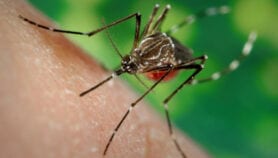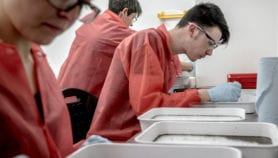By: Calestous Juma
Send to a friend
The details you provide on this page will not be used to send unsolicited email, and will not be sold to a 3rd party. See privacy policy.
Debates over biotechnology are part of a long history of social discourse over new products. Claims about the promise of new technology are at times greeted with skepticism, vilification or outright opposition — often dominated by slander, innuendo and misinformation. Even some of the most ubiquitous products endured centuries of persecution.
For example, in the 1500s Catholic bishops tried to have coffee banned from the Christian world for competing with wine and representing new cultural as well as religious values.
Similarily, records show that in Mecca in 1511 a viceroy and inspector of markets, Khair Beg, outlawed coffeehouses and the consumption of coffee. He relied on Persian expatriate doctors and local jurists who argued that coffee had the same impact on human health as wine. But the real reasons lay in part in the role of coffeehouses in eroding his authority and offering alternative sources of information on social affairs in his realm.
In public smear campaigns similar to those currently directed at biotech products, coffee was rumored to cause impotence and other ills and was either outlawed or its use restricted by leaders in Mecca, Cairo, Istanbul, England, Germany and Sweden. In a spirited 1674 effort to defend the consumption of wine, French doctors argued that when one drinks coffee: “The body becomes a mere shadow of its former self; it goes into a decline, and dwindles away. The heart and guts are so weakened that the drinker suffers delusions, and the body receives such a shock that it is as though it were bewitched.”
Butterfly stories and other misinformation tactics
Today similarly charged stories are told about genetically modified (GM) foods. In addition to claims about the negative impact of GM foods on the environment and human health, there are wild claims that associate GM foods with maladies such as brain cancer and impotence as well as behavioral changes. Some of these rumors are spread at the highest levels of government in developing countries.
The tactics employed in the debates are equally sophisticated. Critics of the technology have used instruments of mass communication to provide the public with information that is carefully designed to highlight the dangers they attribute to biotechnology. Advocates of biotechnology have often been forced to respond to charges against the technology and have only on rare occasions taken the initiative to reach out to the public. This is particularly important because the general public does not readily understand the technical details of biotechnology products and so new communication approaches are needed.
While advocates of biotechnology have often tried to rely on the need for scientific accuracy, critics employ rhetorical methods that are designed to invoke public fear and cast doubt on the motives of the industry. The critics draw analogies between the “dangers” of biotechnology with the catastrophic consequences of nuclear power or chemical pollution. Indeed, they use terms like “genetic pollution” and “Frankenstein foods.”
Critics have also relied on the general distrust of large corporations among sections of the global community to make their case. In addition, they made effective use of incidents, whose risks they have amplified. A much-quoted study by Cornell University researchers indicated that pollen from GM corn (producing a Bt toxin) killed the larvae of Monarch butterflies. This study was used to dramatize the impact of biotechnology on the environment. Subsequent published peer explanations of the limitations of the study and refutations of the conclusions did not change the original impression created by the critics of biotechnology.
In this case the real environmental issue was not if GM corn killed monarch butterfly larvae or not. The critical question was what impact the corn had on the environment compared to corn grown with chemical pesticides. It is the issue of relative risks that is important; not simply a single event examined outside the wider ecological context. But apparently, this kind of analysis would not serve the cause of critics.
It is notable that the critics of biotechnology have defined the rules of the debate in two fundamental ways.
First, they have managed to create the impression that the onus demonstrating safety lies with advocates of biotechnology and not on its critics. In other words, biotechnology products are considered unsafe until proven otherwise.
Second, they have been effective in framing the debate in environmental, human health and ethical terms, thereby masking the underlying international trade considerations. By doing so, they have managed to rally a much wider constituency of activists who are genuinely concerned about environmental protection, consumer safety and ethical social values.
There is a general view that concerted efforts to promote public debate will improve communication and lead to the acceptance of biotechnology products. This may be the case in some situations. But generally, the concerns are largely material and cannot be resolved through public debate alone. This is mainly because the root causes of the debate lie in the socio-economic implications of the technology and not mere rhetorical considerations. It is possible that public debates will only help to clarify or amplify points of divergence and do little to address fundamental economic and trade issues.
What then can be done under the circumstances, especially in relation to developing countries that are currently the target of much of the attention of advocates and critics of biotechnology? Operating in the new global communication ecology will require greater diversity of biotechnology products, an increase in the number of institutional players, enhanced policy research on life sciences and society, and stronger policy leadership.
Products speak louder than words
Much of the debate on the role of biotechnology in developing countries is based on hypothetical claims with no real products in the hands of producers or consumers. Under such circumstances, communication and dialogue are not enough until there is a practical reference point. In other words, rebutting the claim of critics is not as important as presenting the benefits of real products in the market place.
This can be best achieved through collaborative efforts among local scientists, entrepreneurs, policy makers and legitimate civil society organizations. There is ample evidence to suggest that concerns over the safety of new products tend to decline as local participation and ownership in new technologies increase. Similarly, local participation in new technologies increases the level of trust in new technologies, thereby reducing the demand for non-science-based safety regulations. For example, the word of a farmer from South Africa stating the positive impact of GM cotton on her welfare carries more weight than thousands of screaming press releases and empty headlines on both sides of the debate.
This means that spreading the use of biotechnology not only promotes familiarity with the technology, but also generates the information needed to convince the public about the relevance and usefulness of the technology. The broadening of the range of products is therefore a key aspect of the debate. This is particularly important in developing countries interested in using the technology to enhance local products and diversify their food base.
Information on the development of drought-tolerant crops, for example, would be relevant to African countries while other regions might be interested in different products. This view also suggests that general debates about the role of biotechnology are of little utility unless framed in the context of local needs and applications.
The absence of a real stake in the technology creates a vacuum that is often filled with misinformation on the risks and benefits of the technology. Countries such as Kenya and South Africa that have their own biotechnology research programs have a more considered view of the technology.
Broadening the constiuency
Addressing the issue of biotechnology communication requires an improved understanding of the changing ecology of communication. The ecology includes a complex network of sources of information and opinion leaders as well as new communication tools that were hitherto not available to the public or advocacy groups. In his days Khair Beg was outraged to learn that coffeehouses had become an authoritative source of information on what was happening in his jurisdiction. Similarly, the Internet has become a more important communication tool than classical methods such as TV advertising.
But unlike the days of Khair Beg, the new communication ecology is global in character, making it possible to spread information widely and generate empathy among a diversity of activist organizations, including those that are unlikely to be affected by the technology. These cyber-communities are built around a complex set of mailing lists that are not easily accessible. Correcting misinformation spread through such channels is difficult to do because of the complexity of the networks.
While activists tend to use a diverse array of social movements to advance their cause, advocates have tended to focus on the use of centralized institutions whose impact is largely negligible in the modern communication ecology. But creating the necessary diversity requires a broadening of the base of social movements that champion the role of science and technology human welfare.
One of the most important aspects of the biotechnology debate has been the role of the popular media. In Europe, for example, the media have played an important role in amplifying claims by critics or creating doubt about positions advanced by advocates of the technology. In contrast, support for the role of science does not usually have the polemical turn that newspaper editors relish.
The traditional view that science is based on immutable facts which can be passed on from an authority to the general public is being challenged by approaches that demand greater participation in decision-making. In other words, scientific information is being subjected to democratic practices.
The debate over biotechnology has pushed the frontiers of public discourse of technical matters. On the one hand, society is being forced to address issues that are inherently technical, and on the other, the scientific community is under pressure to accept non-technical matters as valid inputs decision-making.
Thinking ahead
Policy-oriented research institutions and think tanks play an important role in the war of words. It is notable that critics of biotechnology have made a considerable effort to create alliances with research institutions, including university-based departments. Much of the material used to question the safety of biotechnology often has the legitimacy of a research institution. But non-partisan policy research on the role of biotechnology in society is largely lacking, and so those seeking to provide an alternative view have limited opportunities to obtain credible information.
The lack of systematic research on the interactions between biology and society is a critical bottleneck in efforts to engage the public in dialogue on biotechnology. This is particularly critical given the fact that advances in biology pose new ecological and ethical issues that are associated with the physical and chemical sciences. For example, concerns over the inability to recall products once released on markets are more pronounced when dealing with the release of biological inventions into the environment.
Leading the way
Much of the public debate is intended to influence government policy on biotechnology. In this regard, the capacity of governments to assess the available information and use it for decision-making is an essential element of the debate. Political leadership on biotechnology and the existence of requisite institutions of science and technology advice are an essential aspect of the governance of new technologies.
Debates over new technologies will be more pronounced in the future, and governments will increasingly come under pressure to address these issues. But science and technology advice will not be sufficient unless governments view science and technology as integral to the development process. In this regard, enhancing the capacity of leadership to address science and technology issues will contribute to the effective management of public debates over new technologies in general and biotechnology in particular.
On the whole, the nature of emerging technologies — particularly those based on the life sciences — and the changing ecology of communication are making it necessary to rethink strategies for advancing the role of biotechnology in society. The scientific community will need not only to demonstrate a clear sense of leadership, but also to adapt its communication methods to suit the growing complexity and diverse needs of the global community. In the final analysis, it is the range of useful products available to humanity from biotechnology that will settle the debate, not the hollow pronouncements of advocates and critics.
Note: The opinions expressed in this article do not necessarily reflect the views or policies of the U.S. Department of State.
This article has been reproduced from Economic Perspectives — a journal of the US Department of State.













